by John Butcher
The popular sport in the Richmond “education” establishment has been to blame the kids for the awful performance of our schools. We particularly hear about our less affluent (the official euphemism is “economically disadvantaged”) students.
We have some data on that. Again.
Here are the average reading pass rates by grade of the economically disadvantaged (”ED”) and non-ED students in Richmond and the state. “EOC” indicates the End of Course tests that generally must be passed to receive “verified credits” that count toward a diploma.
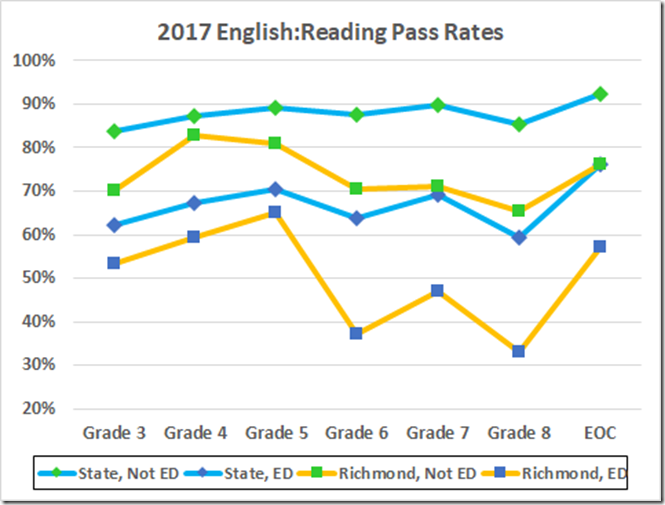
Both in Richmond and on average, the ED group underperforms the non-ED group.
To the point here, the Richmond ED students underperform their peers in the state averages, as do the non-ED Richmond students.
We can calculate the differences between the Richmond groups and state average to measure that underperformance.
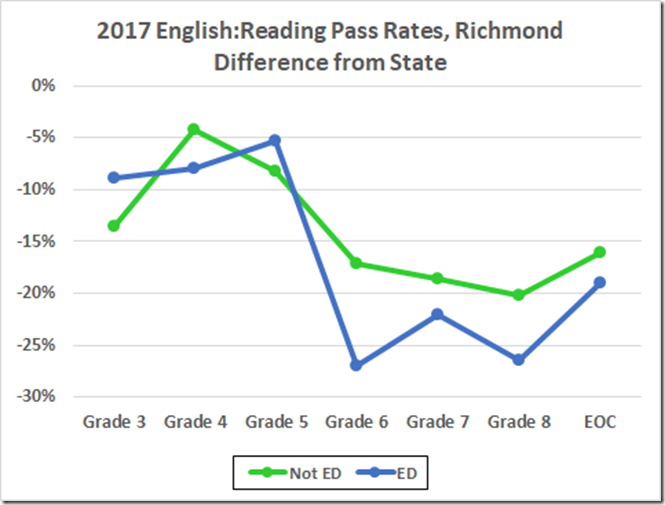
Here we see Richmond’s ED students underperforming their peers by about 7% in elementary school while our non-ED students average some 9% below that group statewide. In middle school the difference increases to roughly 19% for the non-ED students and 25% for the ED group.
The math test results show a similar pattern.
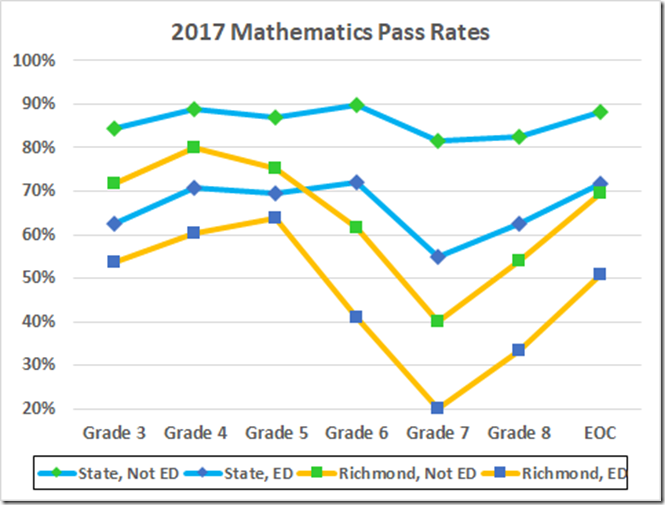
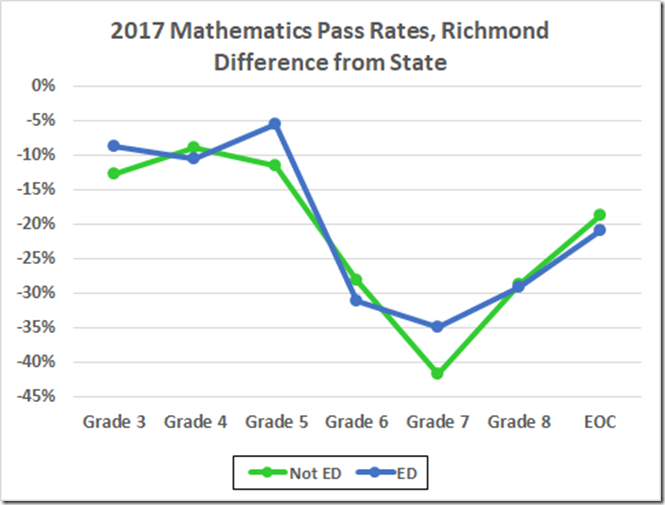
These data tell us two things:
- Richmond students, both ED and not, underperform their statewide peer groups on average; and
- The average SOL performance of Richmond students, ED and not, deteriorates dramatically in middle school.
As I have demonstrated elsewhere, the large percentage of ED students in Richmond (64% in 2017) does not explain our low pass rates. So we are left with (at least) two possible explanations: Either Richmond students are less capable on average than students statewide or our schools are less effective than average.
If Richmond’s students were just less capable, it would explain the low elementary school scores but not the drop in pass rates after the fifth grade.
The plummeting performance of our students when they reach middle school tells us there’s a (big!) problem with our middle schools. And there’s every reason to think that the school system that has terrible middle schools might also have problems with its elementary schools.
To the same end, notice how the ED performance by grade tracks the non-Ed performance in Richmond. We saw the same thing last year:
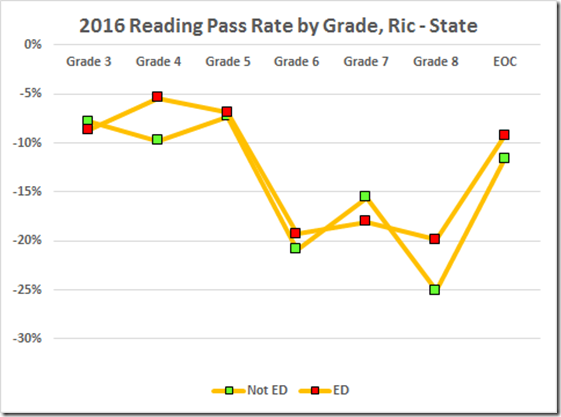
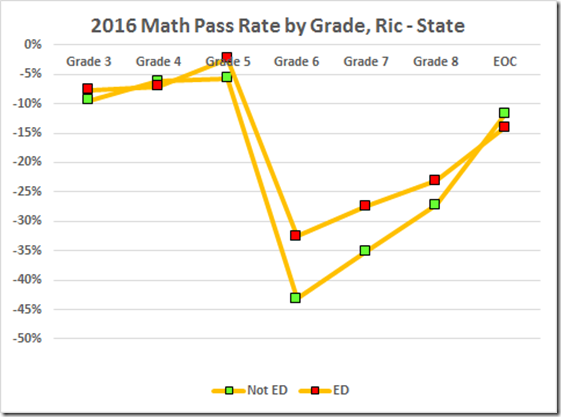
Those parallel curves are fully consistent with the notion that performance variations by grade are driven by the teaching, not by the capabilities of the students.
As well, Friar Occam would suggest the simple explanation: Substandard elementary schools and awful middle schools in Richmond, not thousands of dunderheads (both poor and more affluent) attending those schools.
There’s an alternative that we might consider: I keep hearing that some of our elementary schools cheat on the SOLs. We know for sure that’s happened in the past in Richmond and this year in Petersburg.
If, in fact, the Richmond elementary pass rates are boosted by cheating, it absolves the middle schools of some or all of the decline in scores between the fifth and sixth grades but it leaves the conclusion here intact; it merely moves the elementary schools toward the “awful” category of our middle schools.
This article was originally published on Cranky’s Blog.


